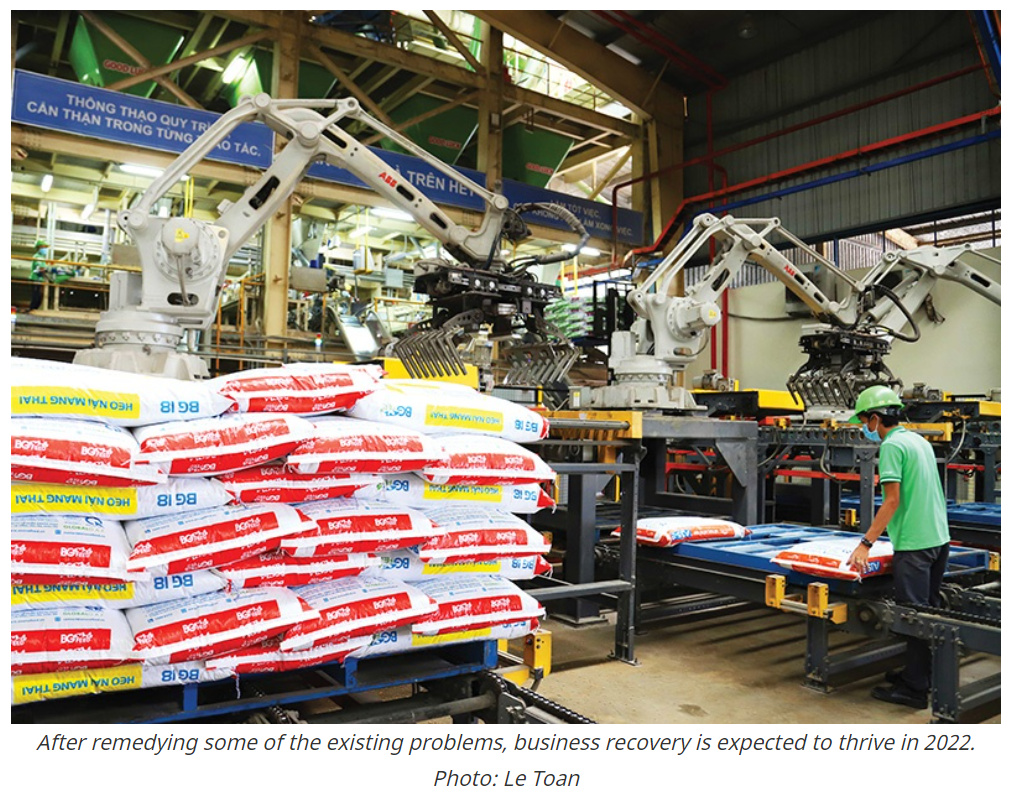Vietnamese spend a lot to buy cars at year-end
According to the Vietnam Automobile Manufacturers Association (VAMA), in November, 38,656 cars were sold, up 30% compared to the previous month and 6% over the same period of last year.
Of this, there were 27,764 tourist cars, an increase of 40%; 10,280 commercial cars and 612 special-use cars, up by 8% and 39% over the previous month.
Vietnam’s automobile market has now recorded strong growth after a long period of gloom. The 50% cut in registration fees for cars manufactured and assembled locally was a strong push to stimulate demand for domestically assembled cars.
Total sales of VAMA by the end of November 2021 reached 257,390 units, up 3% year on year. However, the number of locally assembled cars was 142,671 units, down 10%, while imported cars reached 114,719, up 26% year on year.
Ministry of Transport calls for solutions to ‘save’ local air carriers
The Ministry of Transport has asked the Civil Aviation Authority of Vietnam to urgently complete a comprehensive report on solutions to remove difficulties for the aviation industry, and submit it to the ministry before December 15.
Previously, the Vietnam Aviation Business Association (VABA) asked the Ministry of Transport to ask the Government to grant preferential loans to airlines. The document signed by VABA General Secretary Bui Doan Ne stated that since the 4th covid outbreak in Vietnam, local airlines have fallen into a dangerous situation as their revenue has decreased by 80-90% and their accumulated assets and financial resources are exhausted.
53 shrimp export shipments receive warning about additives
Le Ba Anh, deputy director of the Agro-Forestry-Fisheries Quality Control Department, said that 53 shrimp shipments received warnings about using additives this year.
Currently, Vietnam has 416 shrimp processing facilities eligible to export to markets such as North America, the EU, Japan and China. Since early 2021, of 111 farming areas in 35 provinces and cities, the authorities have detected 10 samples of shrimp that exceed the permitted level for antibiotics such as Chloramphenicol, Ciprofloxacin, Oxytetracycline, Ormetoprim, and Enrofloxacin.
In the coming time, the Agro-Forestry-Fisheries Quality Control Department will continue to implement the national residue monitoring program at aquaculture areas. This agency asks shrimp businesses to strictly implement the ASC quality management program, especially the traceability system, declaring the origin of shrimp exported to the US according to the form DF2031.
Phu Quoc aims to welcome 10 million tourists by 2025
The People’s Committee of Kien Giang province has approved the 5-year socio-economic development plan for the period 2021-2025 of Phu Quoc city, with the goal that by 2025, tourists will reach 10 million, including 4 million foreign visitors.
The plan also aims at promoting tourism in depth, with high quality and sustainability. By 2025, tourism will be a key economic sector of Phu Quoc; Phu Quoc tourism brand will have many high quality and unique tourism products, imbued with national cultural identity; the development of community-based tourism, eco-tourism will be developed.
Tra fish exports to reach over $1.5 billion this year
According to the Vietnam Association of Seafood Exporters and Producers (VASEP), by the end of November 2021, the total export value of Vietnamese tra fish was over US$1.4 billion, up 1.3% year on year.
China is still the largest market, accounting for 28% of Vietnam’s tra fish exports, followed by the US with 22%.
In terms of output, in the first 11 months of 2021, Vietnam harvested 1.3 million tons of tra fish, down 4.9% over the same period of 2020. It is estimated that the total output of tra fish in 2021 will reach 1.5 million tons, equivalent to 2020.
According to VASEP, Vietnam will reach the target of about $1.54 billion in 2021, up 3% compared to 2020.
Bac Ninh builds US$58 million waste power plant
The construction of the plant will start in January 2022 in Thuan Thanh district, Bac Ninh province. The plant can process 500 tons or waste per day and generate 11.6 MW of electricity. Of the total investment of nearly $58 million, $18 million will be provided by the Japanese Ministry of Environment, $30 million by the International Finance Corporation (IFC) and the remaining $10 million from the investor. The project is scheduled to be completed in late 2023.
PV
Source: https://vietnamnet.vn/en/business/vietnamese-spend-a-lot-to-buy-cars-at-year-end-801288.html


 English
English




